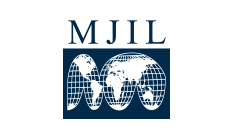Abstract
Part I of this paper sets out a theory of interpretation (drawing on Stanley Fish's idea of interpretive communities) relevant to all interpretive techniques. In Part II, a conception of the purposes and conventions of treaty practice is offered with the aim of shedding light on the interpretive constraints structuring that enterprise. Part III identifies two interpretive communities associated with treaty practice (one narrow, the other broad) and describes their operation in the interpretive process. Special attention is paid to the government legal advisor, who plays a key role within the relevant interpretive communities. Part IV is a case study of the ABM Treaty reinterpretation debate ignited by the U.S. Strategic Defense Initiative; this debate is chosen because the treaty's "political" character renders it typical of international instruments not likely to be submitted to impartial tribunals for authoritative interpretation. The final part of the article consists of a brief discussion of interpretive disputes over the Non-Proliferation Treaty and the United Nations Charter, illustrating how the theory applies to multilateral and constitutional instruments as well as bilateral treaties. These less fully-developed case studies are offered in support of the proposition that, while the interpretive process is apt to be more diffuse with respect to norms embodied in more general instruments, the authority of interpretive communities is no less significant.
Recommended Citation
Ian Johnstone,
Treaty Interpretation: The Authority of Interpretive Communities,
12
Mich. J. Int'l L.
371
(1991).
Available at:
https://repository.law.umich.edu/mjil/vol12/iss2/3

